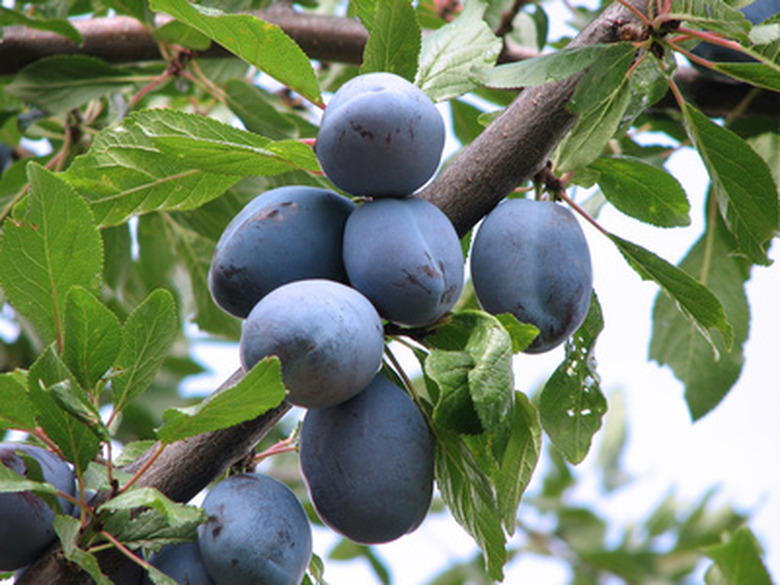How To Transplant Plum Trees
Things Needed
- Sharp spade or shovel
- Wheel barrow
- Water
- Mulch
If your plum tree because it is not doing well in its current location, or you need the area for something else, don't hesitate to transplant the tree. Whatever the reason for the move, plum trees have a medium-to-high success rate when they are transplanted, according to the North Dakota State University Cooperative Extension. With proper care, plum trees can produce fruit for 15 to 20 years.
Step 1
Prepare a new location for your plum tree that receives full sun and has adequate drainage. Loosen the soil in preparation for digging a hole for your transplant's root ball. It is difficult to know precisely how large your hole needs to be until you dig the tree from its current location.
Step 2
Water your plum tree daily, beginning three days before you plan to move it. Plan to transplant your plum tree in early spring, before the buds come out, or late fall, after the foliage begins to drop.
- If your plum tree because it is not doing well in its current location, or you need the area for something else, don't hesitate to transplant the tree.
Step 3
Mark the area around the plum tree with a sharp spade or shovel. You will need to dig farther out than you may expect the root ball to be, or about 6 inches beyond the drip line. For example, make an imaginary line from the outermost tip of the branch down to the ground, then go another 6 inches out away from the tree.
Step 4
Dig deep, and gently lift the root ball with the shovel. Work around the root ball on all sides, so that when you pull up the tree it comes out of the ground easily.
Step 5
Place the tree in a wheel barrow filled with 3 to 4 inches of water. Place the wheel barrow in a shaded location while you prepare the new hole.
- Mark the area around the plum tree with a sharp spade or shovel.
- Place the wheel barrow in a shaded location while you prepare the new hole.
Step 6
Dig a hole at the new site that is the same depth as the root ball, and three times as wide.
Step 7
Insert the tree into the hole, and refill the hole with the soil. Tamp the soil down gently, but firmly, around the roots.
Step 8
Water the tree with a gallon of water and watch for any sink holes in the soil. If the soil sinks, fill in with more soil and tamp it down firmly.
Step 9
Cover the soil with mulch, such as straw, wood chips or sawdust. Set the mulch in place at least 4 inches away from the trunk and work outward, so that no mulch touches the trunk of the tree.
- Dig a hole at the new site that is the same depth as the root ball, and three times as wide.
- Set the mulch in place at least 4 inches away from the trunk and work outward, so that no mulch touches the trunk of the tree.
Tip
If you don't have a wheel barrow to use, you can also soak a large piece of burlap or canvas in water, and set the root ball on it when you remove the tree from the ground. Tie the fabric up around the root ball to keep roots moist.
